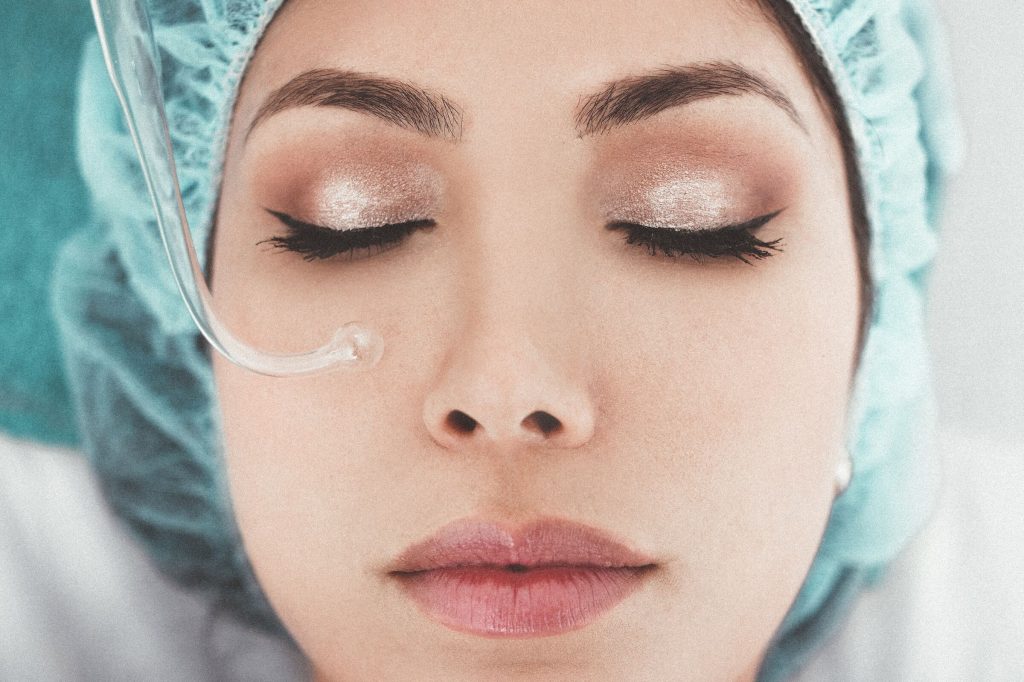Understanding Traditional Facials
The Rise of Hydrafacial Treatments
Comparing the Techniques
Potential Benefits for Different Skin Types
- Sensitive Skin: Hydrafacials are generally more suitable for sensitive skin due to their gentle process. Traditional facials, especially those involving manual extractions or strong chemicals, can sometimes be too harsh.
- Acne-Prone Skin: Both treatments can benefit acne-prone skin, but hydrafacials offer a more consistent and less irritating method of extraction and hydration.
- Ageing Skin: Hydrafacials can provide more targeted anti-ageing benefits through the use of specific serums and antioxidants. Traditional facials also offer anti-ageing benefits, but they may not be as targeted or potent.
Customisation and Results of these Painless Cosmetic Treatments
Hydrafacials offer a high level of customisation through various serums, addressing specific skin concerns like fine lines, wrinkles, dullness, and uneven skin tone. Traditional facials are also customisable but may not offer the same level of targeted treatment. In terms of results, hydrafacials often provide immediate and noticeable improvements with consistent outcomes, while traditional facials might have more varied results.
Downtime and Side Effects
One of the significant advantages of hydrafacials is their minimal downtime. Most clients can return to their normal activities immediately after the treatment. Traditional facials, especially those including more intensive procedures like deep chemical peels or microdermabrasion, might require some downtime due to redness or sensitivity.
Long-Term Skin Health
Both hydrafacials and traditional facials can contribute positively to long-term skin health when performed regularly. Hydrafacials, with their ability to deeply cleanse and hydrate, can improve skin health over time, while traditional facials can maintain skin health and address specific concerns as they arise.
Evaluating Cost-Effectiveness and Accessibility
When considering any skincare treatment, two critical factors often come into play: cost-effectiveness and accessibility. These factors can significantly influence a person’s decision to opt for one treatment over another.
Cost-Effectiveness of Hydrafacials vs. Traditional Facials
- Initial Investment: Generally, hydrafacials tend to be more expensive per session compared to many traditional facials. This is due to the advanced technology and specialised serums used in the treatment. However, it’s important to consider the value offered in terms of results and long-term benefits.
- Long-Term Value: Hydrafacials provide comprehensive benefits, from deep cleansing to hydration and antioxidant protection. This multifaceted approach can mean fewer treatments over time, as hydrafacials often have longer-lasting results compared to some traditional facials.
- Customisation and Targeted Treatments: The ability to customise hydrafacials with specific serums for individual skin concerns can also be cost-effective in the long run. Instead of multiple different treatments to address various issues, a hydrafacial can tackle several concerns in one session.
Accessibility and Availability
- Traditional Facials: These are widely available at most spas, beauty salons, and skincare clinics. The ubiquity of traditional facials makes them easily accessible to a broad audience. They have been a staple in skincare for many years, making them a familiar choice for most people.
- Hydrafacials: While hydrafacial use is becoming increasingly popular, they may not be as widely available as traditional facials. The need for specialised equipment and trained aesthetician or hydrafacial MD can make them less accessible in some areas. However, their growing popularity is leading to more widespread availability for combatting dull skin and treating acne prone skin.
Considering Individual Skincare Goals and Preferences
Every person’s skin is unique, and so are their skincare goals and preferences. When deciding between a hydrafacial and a traditional facial, it’s essential to consider what you are looking to achieve with your skincare treatment. Are you looking to prevent breakouts? nourish your skin? get even skin tone? treat rosacea? Answering all these questions will help you decide which treatment will give your skin the care it needs.
- Immediate Results vs. Relaxation: If immediate, visible results in skin texture and tone are your priority, a hydrafacial might be the better choice. For those who value the relaxation and pampering experience of a facial, traditional treatments might be more appealing.
- Dealing with Specific Skin Issues: For individuals dealing with particular skin issues like acne, hyperpigmentation, or premature ageing, the targeted approach of a hydrafacial can be more beneficial.
- Sensitivity and Tolerance: If you have extremely sensitive skin or specific skin conditions, consulting with a dermatologist or a skincare professional is advisable before deciding on the treatment. Hydrafacials are generally suitable for sensitive skin, but it’s always best to get professional advice.
Choosing between a hydrafacial and a traditional facial largely depends on your specific skin type and concerns. For those seeking a gentle, consistent, and technologically advanced treatment, hydrafacials are an excellent choice. They offer a range of benefits with minimal discomfort and downtime, making them suitable for almost everyone.
Want to Get a Hydrafacial in Singapore? Achieve Radiant Skin with Aesthetic Chapter
At Aesthetic Chapter, we specialise in The Original HydrafacialTM, using patented technology to cleanse, extract, and hydrate your skin. Our treatment is designed to give you the best skin of your life, addressing every aspect of good skincare. Book your first trial with us at just $100 NETT and experience the transformative power of hydrafacials for yourself.



